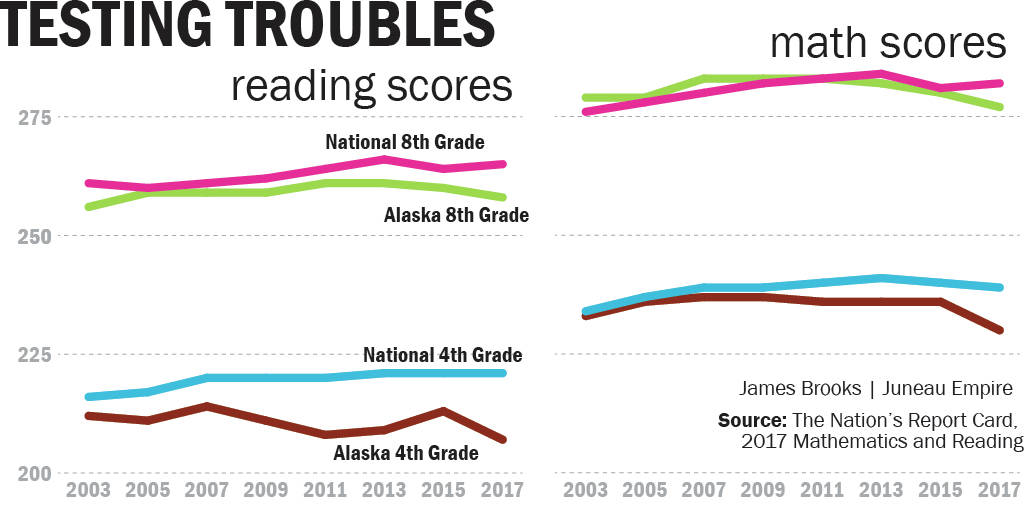New national test scores show Alaska students below national averages in reading and math skills, and the gap is widening.
On Tuesday, federal officials publicly released the results of the National Assessment of Educational Progress, a standardized test administered every two years to fourth-graders and eighth-graders across the country. Alaska’s performance was low, even by its own standards.
“We should be dissatisfied. We cannot be satisfied with the results as they stand or the trend as that gap is widening with the rest of the country,” said Michael Johnson, commissioner of the Alaska Department of Education and Early Development.
On a scale of 0-500 points, Alaska fourth-graders averaged 207 points for reading skills. The national average was 221. Eighth-graders in Alaska averaged 258 points, seven points below the national average.
Similar gaps were seen in mathematics, and the trend isn’t a good one: Alaskans scored worse in all NAEP tests in 2017 than they did in 2015, the last time the test was administered.
In mathematics, the six-point decline among fourth-graders was the largest in the country. The three-point drop for eighth-graders tied with Vermont for the second-largest decline in the country. Rhode Island had a four-point decline.
In reading, the six-point decline for fourth-graders was the largest in the country. Among eighth-graders, the three-point drop tied with three other states for the largest nationally.
The NAEP tests only a sampling of students in each state, so district-level and school-level figures aren’t available, unlike with PEAKS, the state’s own standardized test.
When the state’s standardized test results were released in September, they showed 68.2 percent of students were “below proficient” or “far below proficient” in math and 61.6 percent of students were in those two categories in English.
Administrators cautioned that the two tests have different scales and different grading standards, so a direct comparison may be misleading.
The results released Tuesday are from a test administered in the first three months of 2017 to about 130 schools across Alaska, according to figures provided by the state department of education.
Speaking in a conference call with reporters on Monday morning, Johnson said it’s not possible to pin down the reason for Alaska’s declining scores in “one or two reasons,” just as a child is not defined by one or two things.
“Kids are much more complex than one or two reasons,” he said.
Johnson said he hopes the results serve as a wake-up call for Alaskans and prompt them to start asking what they can do to help students succeed.
“I hope they’ll see (the results) as a call to action,” he said.
He suggested Alaskans should call their schools and school districts and ask to help.
“Ask them how they (parents and community members) can be part of closing this achievement gap that we have in this state,” he said.
• Contact reporter James Brooks at jbrooks@juneauempire.com or 523-2258.

